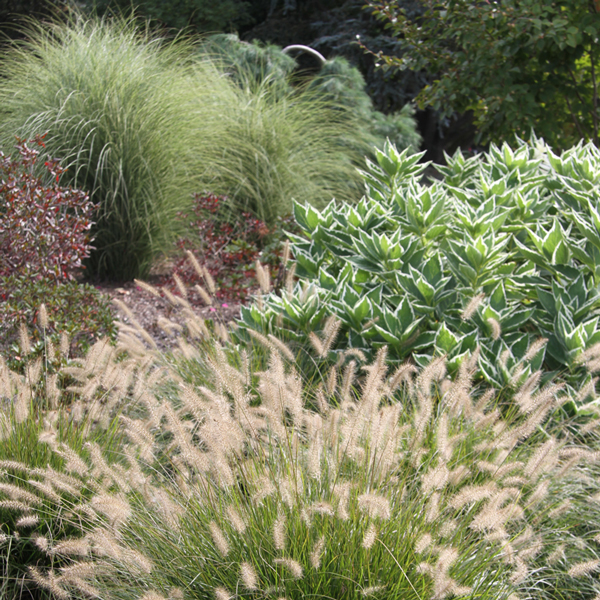By Dirk Coburn, Horticultural Specialist at Weston Nurseries, June 1, 2013
Q: My ornamental grass is still brown. When will it turn green?
A: Last year’s stalks will not turn green. New shoots develop into a new set of stalks each year. The old stalks should be removed.
Q: Should I remove the dried stalks before or after the winter?
A: You have some choice here. Most of us recommend leaving the stalks on through the winter. The visual interest of the dried grass in winter is one of the reasons people plant ornamental grasses. Also, leaving the stalks provides horticultural benefits. The uncut stalk protects and insulates the “crown” of the plant that keeps the fire of life burning for the next growing season. There are those who cut back the stalks somewhat in the fall for a “neater” look.
In either case, you should cut the previous year’s stalks back to about 2 inches in height any time between the last week in March and the middle of April. This will give the new shoots space, light, and air and will promote earlier new growth.
Q: I planted an ornamental grass last year and it has not done much this year. Is there something I can do, or is it dead?
A: An ornamental grass planted just this year or last year will usually develop a little later, and will not reach its long-term maximum height. This is because the plant is putting energy into root establishment.
Q: What should I expect in future years when my ornamental grasses are more established?
A: Usually, you will see small new shoots on your ornamental grasses some time between early May and early June. They may seem sparse at first. This year the early spring was quite dry and the whole spring has been cooler than normal, so many ornamental grasses are just beginning (or about to begin) to show growth.
Q: We go away when school is out, and my ornamental grasses are never very tall yet. Is there a kind that gets tall early in the season?
A: Ornamental grasses, unlike our region’s lawn grasses, are mostly hot-weather growers. They reach their full height in late July or August. When they are established they do not require extensive maintenance, so they are a good choice for a part-time or absentee gardener. You will just have to enjoy the full splendor of your grasses when you return.








